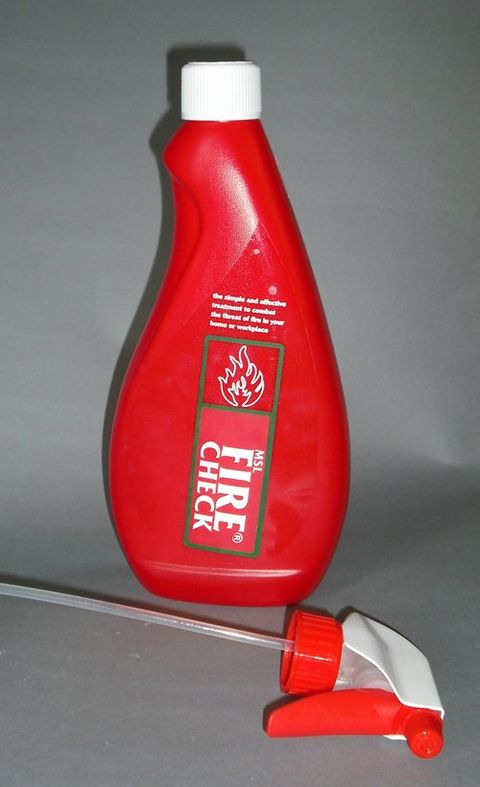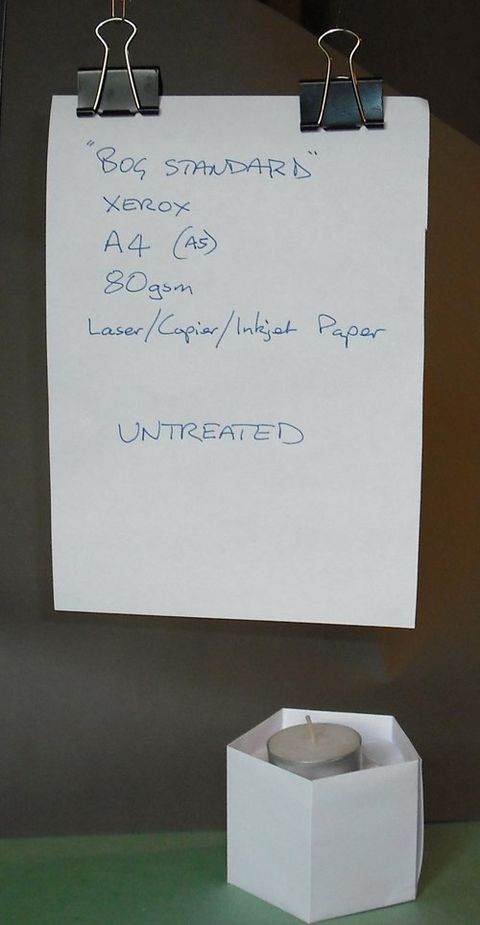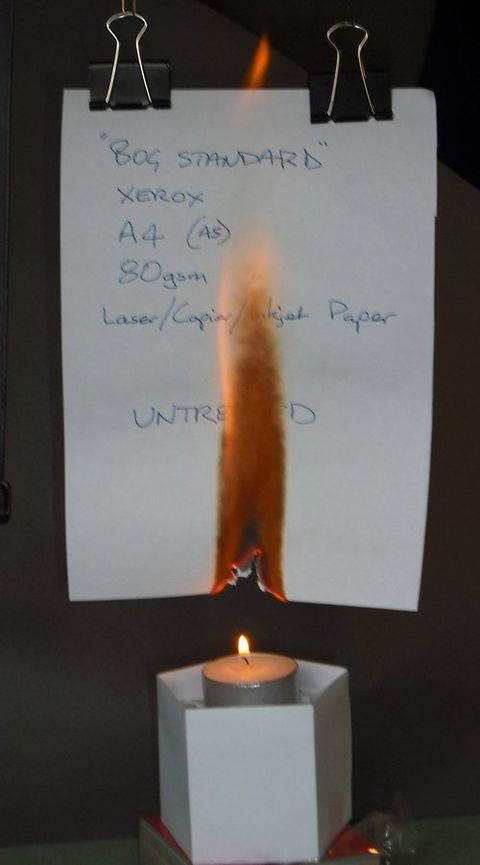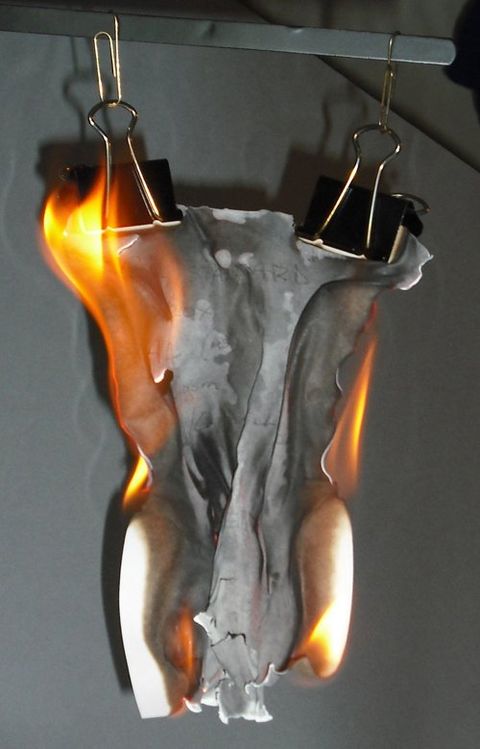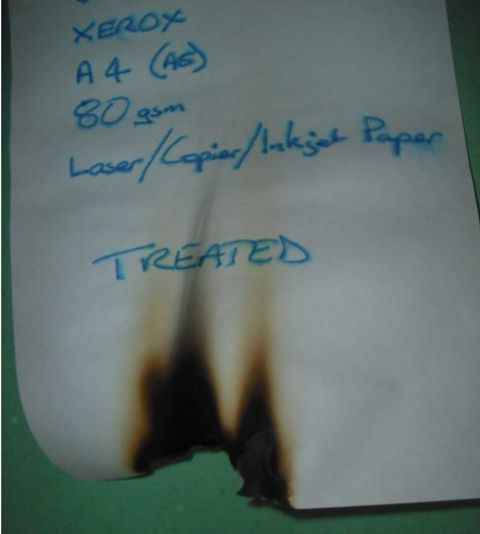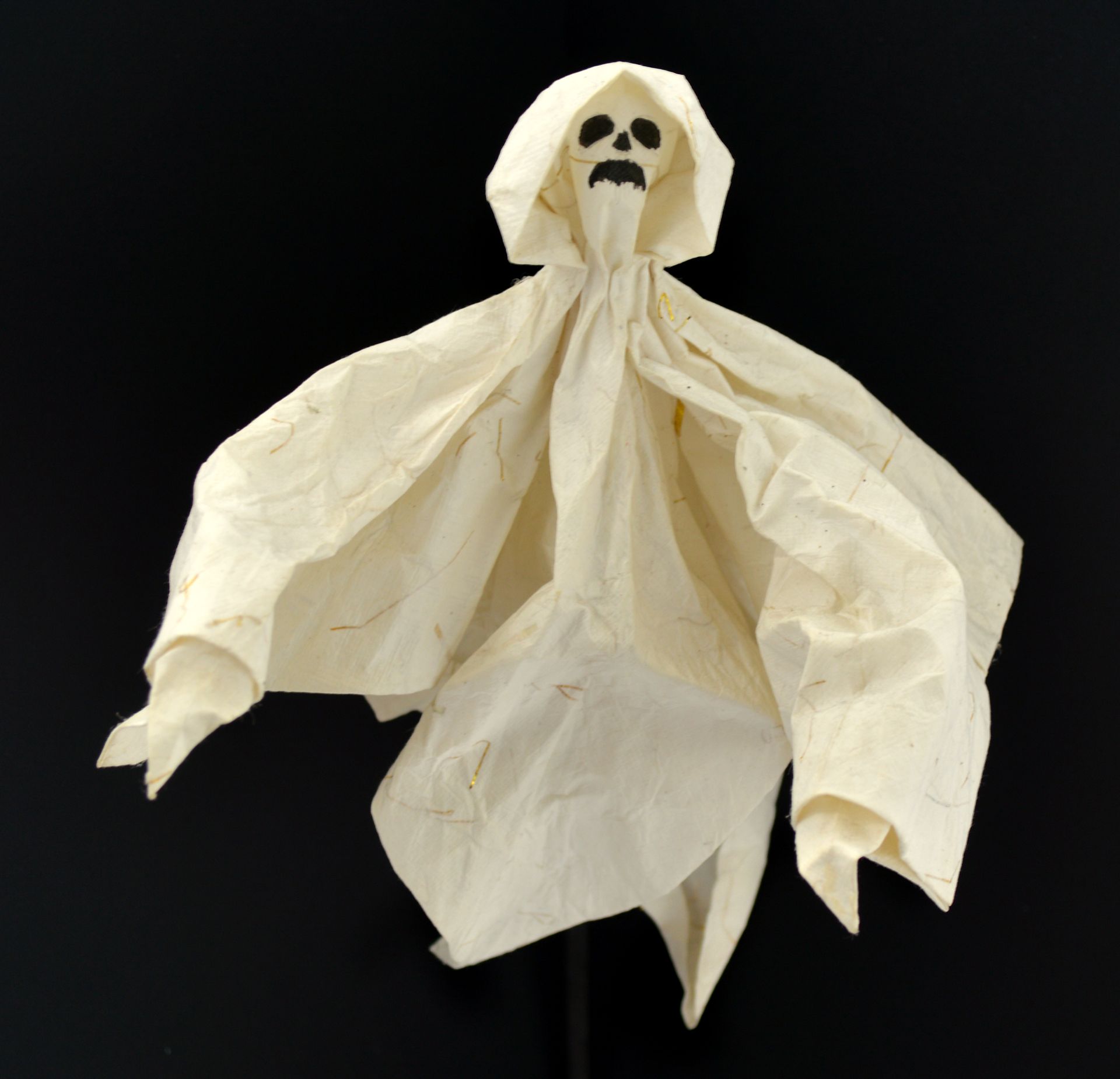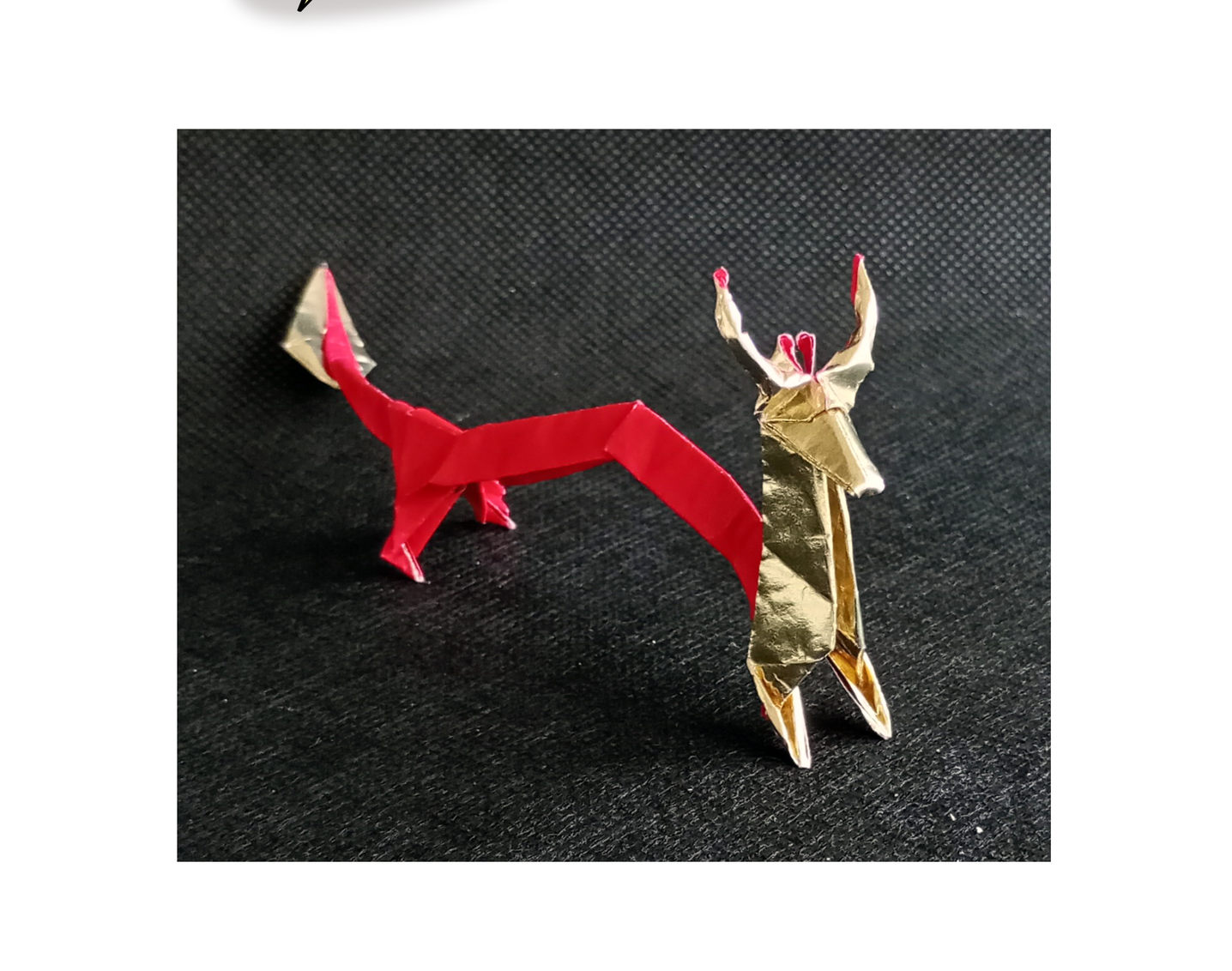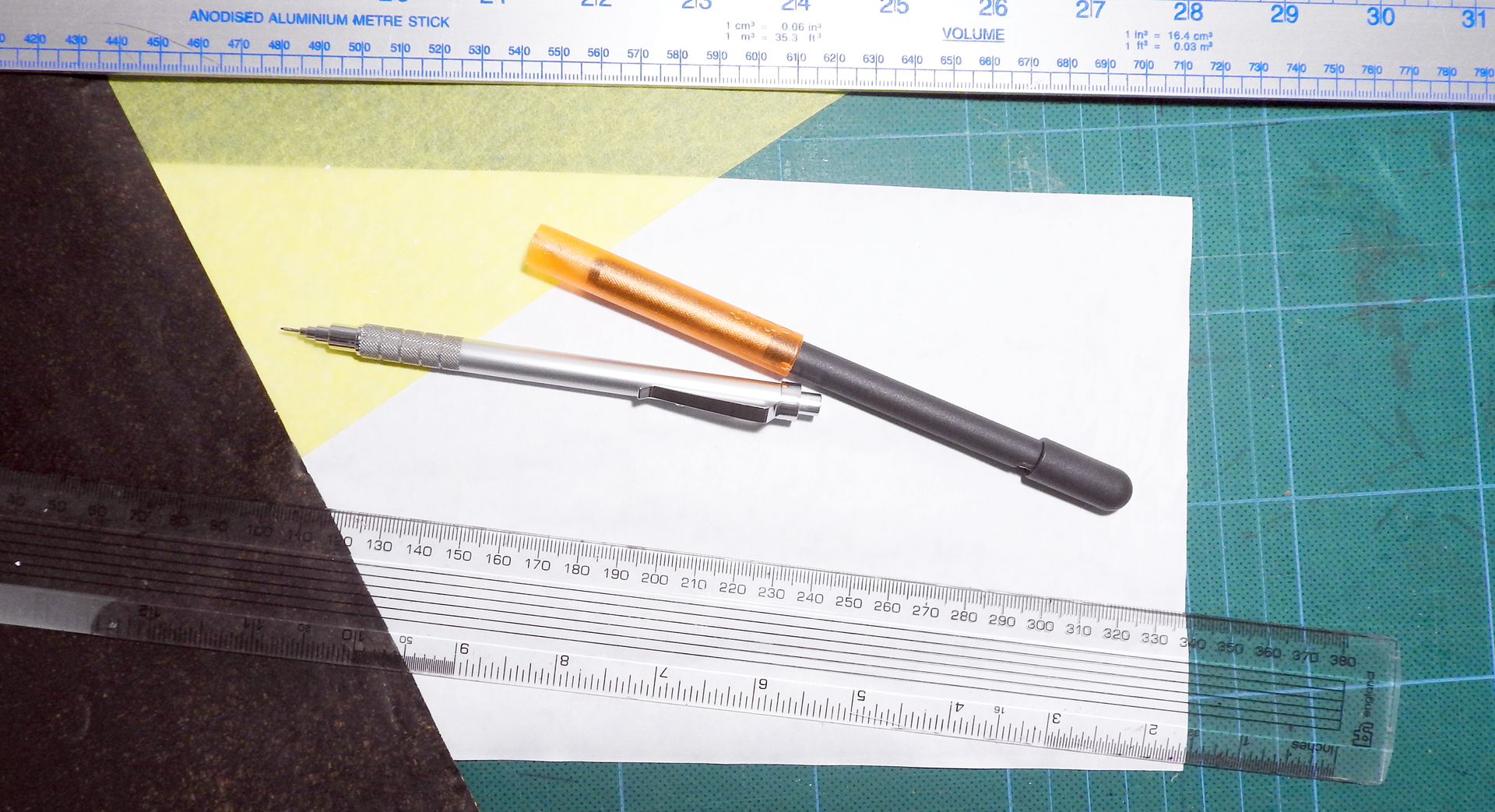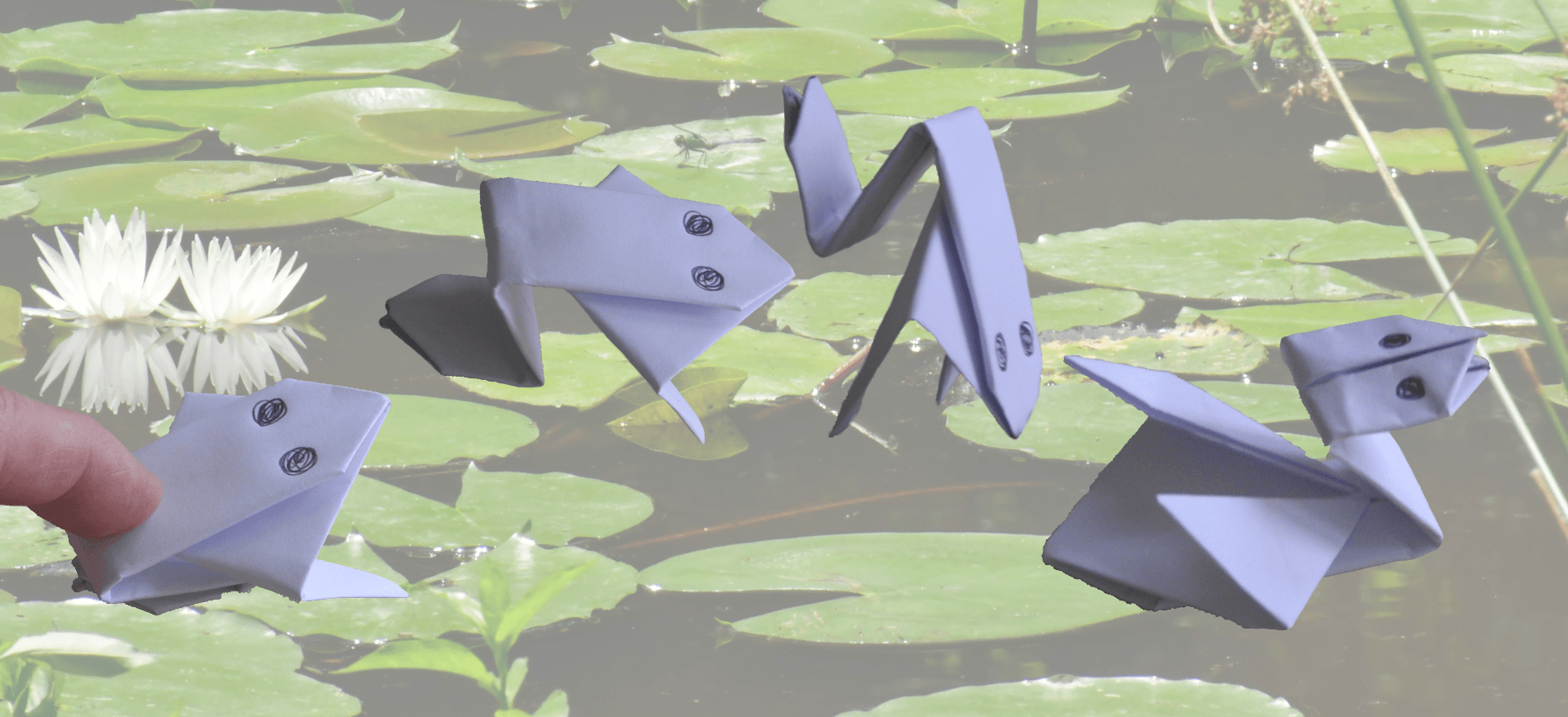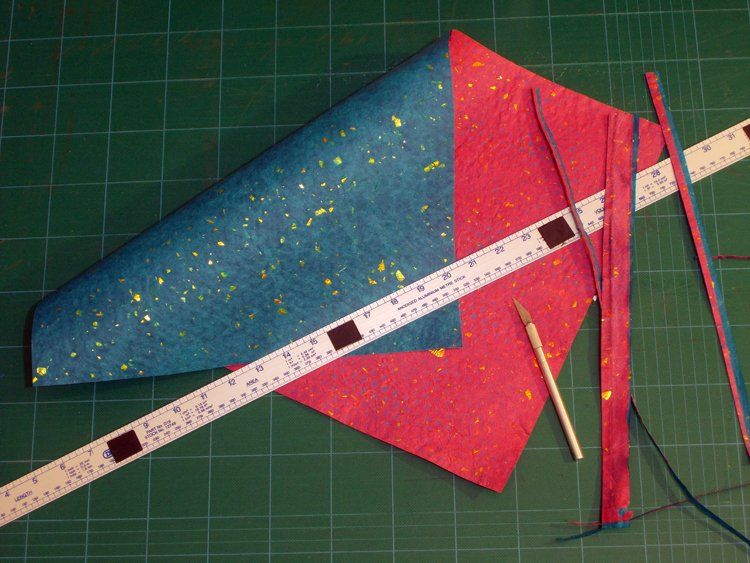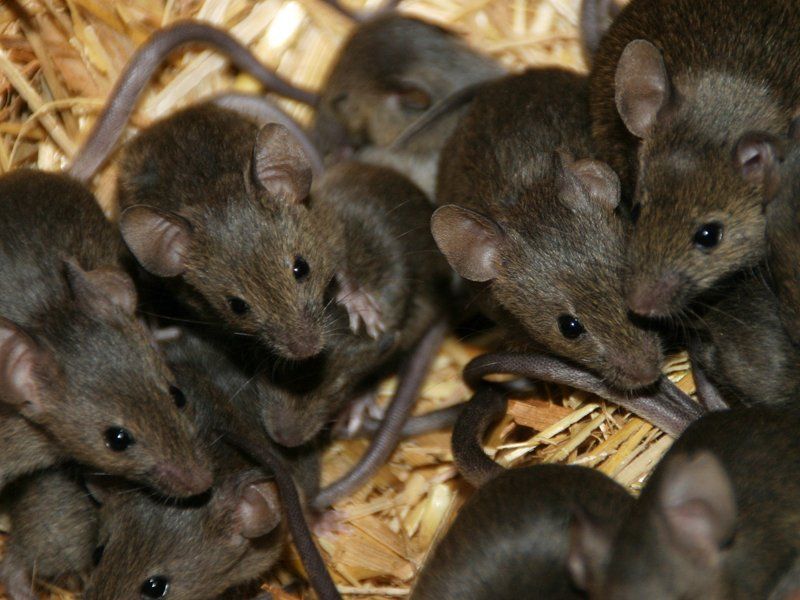Fire Proofing Paper
As I am sure you are aware, paper is flammable. It ignites and burns easily. There is a solution.
Some years ago I was commissioned to fold a life-sized dolphin for a trade show in the SEC Glasgow and then to repeat the process a few months later at the ExCel London.
Both venues insisted that all exhibit materials must be fireproof. After searching around the interwebs for a short time, I discovered FireCheck.
It describes itself as "a flame retardant spray that will treat anything that will absorb water. Simply apply a fine mist to all exposed surface areas of the article requiring treatment."
And I can assure you, dear reader, that it works a treat. See the pictures below for visual proof.
1. This is the basic set-up. A sheet of paper suspended above a candle.
2. After 1 second the untreated paper is well alight.
3. After just 10 seconds the untreated paper is nearly completely burnt.
4. After 1 second the treated paper has a small blackened area just above the candle flame.
5. After 10 seconds the small blackened area is only slightly larger and is still not alight.
6. Detail of total damage after 1 minute. The paper itself never caught alight.
FireCheck is very easy to apply - just spray it on and allow to dry. One word of warning though, the stuff smells strongly of urine. That is because it contains uric acid and ammonium bromide, which are constituents of urine. However, the smell dissipates quite quickly and is soon unnoticeable unless you put your nose right up to the surface of the paper.

